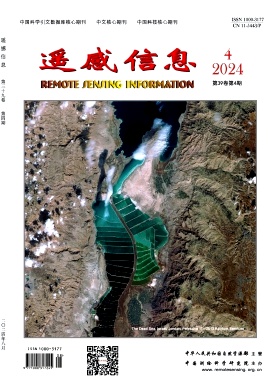A study of the effect of swell in scatterometer wind measurements using ERS SAR wave mode data
引用次数: 2
Abstract
Coincident and nearly co-located SAR wave mode data and scatterometer data are used to study the effect of swells in the ERS scatterometer measurements. It is shown that the speckle power in the SAR wave mode spectrum is a good measure of the mean radar backscatter from the ocean surface. The wind dependence of the speckle power is compared with the scatterometer winds with and without the effects of swell. It is shown that the speckle power increases in the presence of swell. The swells travelling in the azimuth direction have a greater impact on the speckle power than range travelling swells. It is argued that the wind speed dependence of the SAR speckle power enables the SAR to be used as a high resolution wind mapper.利用ERS SAR波模数据研究膨胀对散射计测风的影响
利用重合和近似同位的SAR波模数据和散射计数据,研究了膨胀对ERS散射计测量的影响。结果表明,SAR波谱中的散斑功率是测量海面雷达平均后向散射的一个很好的指标。将散斑功率的风依赖性与有和无膨胀效应的散射计风进行了比较。结果表明,当存在膨胀时,散斑功率增大。在方位角方向上传播的波浪比在距离方向上传播的波浪对散斑功率的影响更大。认为SAR散斑功率对风速的依赖关系使SAR能够作为高分辨率的风成图仪。
本文章由计算机程序翻译,如有差异,请以英文原文为准。
求助全文
约1分钟内获得全文
求助全文
来源期刊
自引率
0.00%
发文量
3984
期刊介绍:
Remote Sensing Information is a bimonthly academic journal supervised by the Ministry of Natural Resources of the People's Republic of China and sponsored by China Academy of Surveying and Mapping Science. Since its inception in 1986, it has been one of the authoritative journals in the field of remote sensing in China.In 2014, it was recognised as one of the first batch of national academic journals, and was awarded the honours of Core Journals of China Science Citation Database, Chinese Core Journals, and Core Journals of Science and Technology of China. The journal won the Excellence Award (First Prize) of the National Excellent Surveying, Mapping and Geographic Information Journal Award in 2011 and 2017 respectively.
Remote Sensing Information is dedicated to reporting the cutting-edge theoretical and applied results of remote sensing science and technology, promoting academic exchanges at home and abroad, and promoting the application of remote sensing science and technology and industrial development. The journal adheres to the principles of openness, fairness and professionalism, abides by the anonymous review system of peer experts, and has good social credibility. The main columns include Review, Theoretical Research, Innovative Applications, Special Reports, International News, Famous Experts' Forum, Geographic National Condition Monitoring, etc., covering various fields such as surveying and mapping, forestry, agriculture, geology, meteorology, ocean, environment, national defence and so on.
Remote Sensing Information aims to provide a high-level academic exchange platform for experts and scholars in the field of remote sensing at home and abroad, to enhance academic influence, and to play a role in promoting and supporting the protection of natural resources, green technology innovation, and the construction of ecological civilisation.

 求助内容:
求助内容: 应助结果提醒方式:
应助结果提醒方式:


